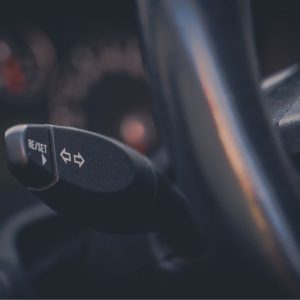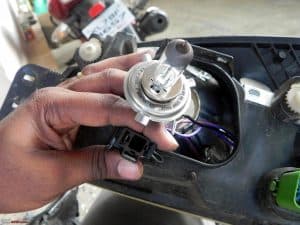Turn signals are one of the most essential systems in a car and turn signals must operate smoothly. It ensures that everyone reaches their destination safely and maintains harmonization in road traffic.
If the turn signals are blinking faster than usual then it might relate to an underlying problem. Before rushing to the repair shop, you can easily fix this problem quite fast and save some hard-earned bucks. While solving the problem, we will know the key function of the turn signal system, reasons and solutions of its blinking faster.
Table of Contents
How To Fix Turn Signal Blinking Fast? [Quick Fix]
If your turn signal is blinking fast, it could indicate a problem with the turn signal relay, switch, or wiring. To fix this, try replacing the turn signal relay or switch, or repair or replace damaged wiring. Use caution and follow safety precautions when working on your vehicle.
How does the turn signal system operate?

The operation of the turn signal system in any kind of vehicle is quite simple as every vehicle uses a battery as the initial source of power. The power from the battery goes through a set of fuses and delivers power to the turn signal relay located on the switch side. The circuit closes as the multi-function switch is triggered, turning the flasher lights on. The turn signals are switched on as power transitions through the flasher relay. The system is quite simple but there is a catch!
The blinker, also known as the turn signal relay, functions sophisticatedly as it does not deliver a constant supply of current when the controller of the relay is closed. Rather it will alternatively close and open the circuit to make the blinking of lights possible. The frequency of blink is dictated by the amount of electricity that channels through the light bulbs. If the lights consume more current then it will result in slower blinking.
Why is the turn signal light blinking fast?
There are a lot of things that can cause this problem and make the lights consume less current, operating at a high blink rate. The viable reasons are elaborated below:

Burnt light bulb: The most widely known issue to cause faster-blinking lights are burnt light bulbs within the circuit. This is also a very common fault that will cause your turn signals to stop when you apply brakes. The circuit contains various sets of light bulbs and all have a constant amount of current flowing through them. When a single or multiple light bulb stops working or simply gets burnt then the flashers will blink fast. The turn signals have a junction that causes them to operate in pairs. These pairs of lights draw a stated amount of current but when one light is burnt then the current flow amount changes and causes the flasher relay to blink faster.
Short circuit or opened wiring: Wires are susceptible to corrosion, rust, and various other types of damage. If the wires are damaged in any way then it prevents the smooth flow of current to the light bulbs. Also, shorted wires touch the body of the vehicle, creating a short to the ground causing this type of problem.
Incompatible light bulb: If the light bulb is replaced with a new one recently and it causes the turn signals to blink fast then it means that the new lights have an incompatible wattage which causes the discrepancy in blinking frequency. If the bulb is of higher wattage then it draws more power to the bulbs, causing them to blink slow and vice versa.
An incorrect number of lights in the circuit: Vehicle modification has gained a lot of traction over the years. However, whilst doing modifications to light bulbs, adding or removing light bulbs will make the flasher relay go crazy and cause blinking problems. Therefore, every time a light bulb is added or removed from the vehicle; one should replace the flasher relay accordingly.
Insufficient flasher relay: Every vehicle has a specific flasher relay designed by the manufacturer to suit the specific signal configuration of the vehicle. These flasher relays have OEM specified light bulb wattage, severalty, flashing light synchronization, targeted blink frequency, etc. replacement of the flasher relay with a generic one will cause blinking speed problem.
Defective flasher relay: Flasher relays also get damaged over time, their relay pins get corroded, humidity causes damage and a lot of other factors might be at play. A faulty flasher relay equals the incompatible flow of current to the light bulbs which results in faster or slower blinking frequency. However, flasher relays rarely get damaged and it’s not a common occurrence. This problem happens mostly to water-damaged vehicles as the water reaches the fuse box and causes these sorts of issues.
Ways to fix the fast blinking turn signals
Faster blinking turn signals are an electrical problem of the vehicle hence like any other electrical problem it is efficient if a procedural method for troubleshooting the problem is followed. This will result in faster detection of the underlying problem as stated above, which causes the turn signals to blink fast.
The main power source, the connection of the flasher relays, light bulbs, and fuses are a great place to start the troubleshooting. The car won’t start if it has a dead battery so these minor but impactful marks have to be ticked early. To easily diagnose the problem, following the below stated steps will help to solve the fast blinking flasher problem quickly.
1. Inspecting that all the turn signals work
To identify the fast blinking, a multi-function switch needs to be activated and turned to the side which is blinking fast. If all the signals are working as they should then we can skip ahead to step 4. If the signals are not working properly then follow the next step.
Check our recommended 3 best multi-function switches from Amazon.
Dorman-2330813-Multifunction-Switch-Assembly
Original-Engine-Management-TSS13-Multi-Function
Standard-Motor-Products-CBS-1208-Combination
2. Checking if any light bulb is faulty or burned
Almost 90% of the time the troubleshooting stops here as there is the likelihood that one or many light bulbs are burnt or faulty. This can be checked by taking the non-performing light bulb out and closely inspecting if the little wire inside is broken or not. A foggy black on the light bulb also indicates that it’s faulty. Replacing the faulty light bulb with an OEM specified wattage one will solve the problem and make blinking speed normal.
3. Power check and ground checking the turn signal
Replacing the light bulb still did not solve the problem and the newly replaced light bulb is not working then it means the light bulb is not getting proper power and ground from the bulb socket. A multimeter should be used to test the bulb socket for power and ground. If the bulb socket is faulty then it needs to be changed.
Replace the light bulb from Amazon.
Our recommended multimeter from Amazon is there.
4. Checking the turn signal relay
If every other component seems ok then the most unlikely circumstance that can happen is the turn signal relay is faulty. The turn signal relay’s controller sides might not work properly and unable to flow current to the bulbs. All the left and all the right signals do not work at all when a relay is faulty. If that’s the case then the flasher relay needs to be changed.

Change the flasher relay from Amazon.
But if one side of the left or right signal works then the following steps should be taken.
5. Checking for short circuit or ground short
If it seems that all the light bulbs are in working condition and the flasher relays are also up to condition then it means that there is some hurdle in the circuit or wiring which is causing the blinkers to go crazy. The wires are either broken or damaged somewhere and as a result, the power cannot go properly. The wire might have been touching the hot part of the engine bay for a long time or friction/rubbing against something which might have damaged it. Fixing the damaged wiring or short in the circuit will help to solve the problem right away.
The Last Step: Bringing a new turn signal system.
The last resort to the problem is changing the entire turn signal system which is costly as well as inefficient at the same time. Contacting the OEM shops will help to determine proper turn signals for the car and it’s best to replace the new turn signals from their service center.
Let’s Wrap Up!
To sum up, these are all the ways you can undertake to fix this problem. Hope you could do it by yourself. In doing so, you may need different tools. We have some recommendations for you from Amazon as well.
And, if you feel difficulties while doing it yourself, then you should hire a local technician.
